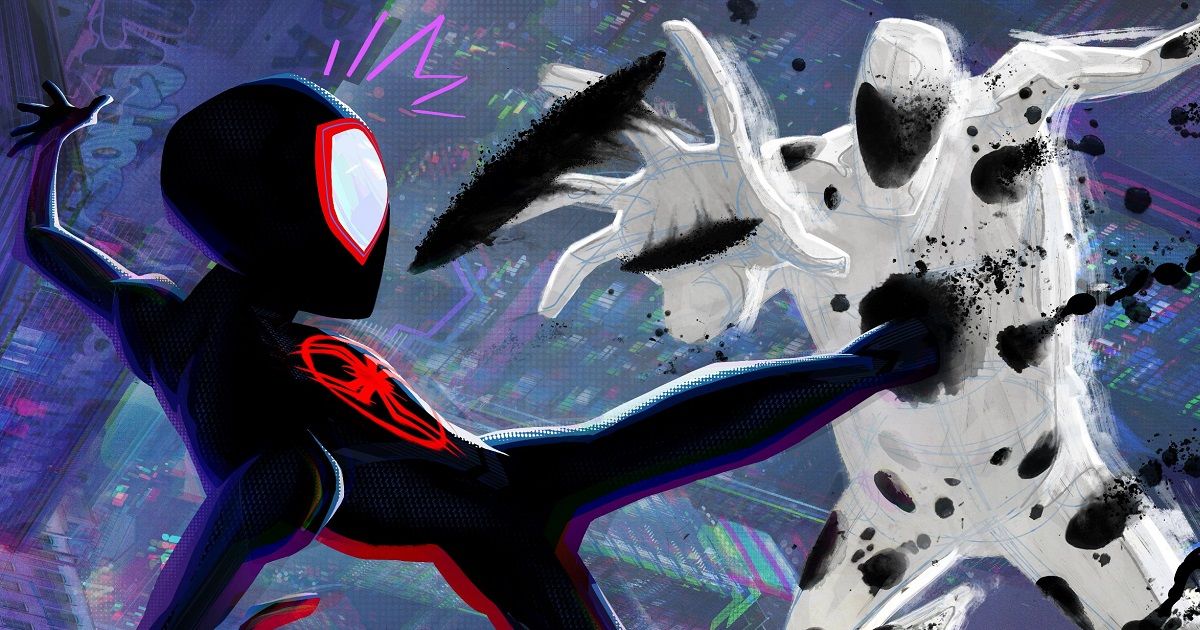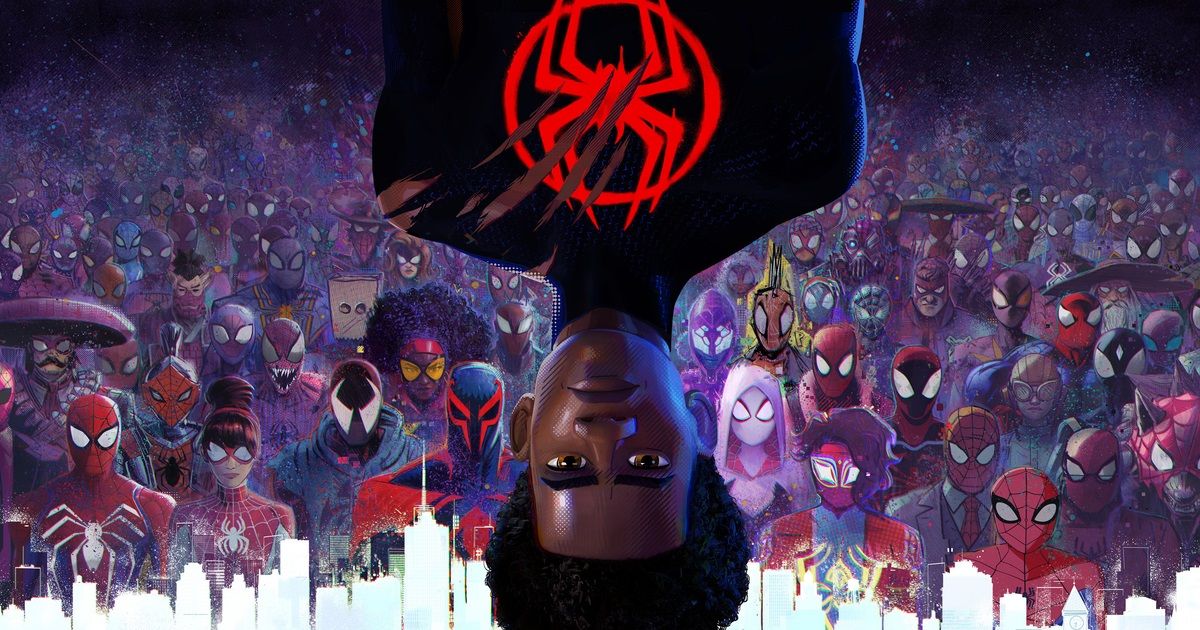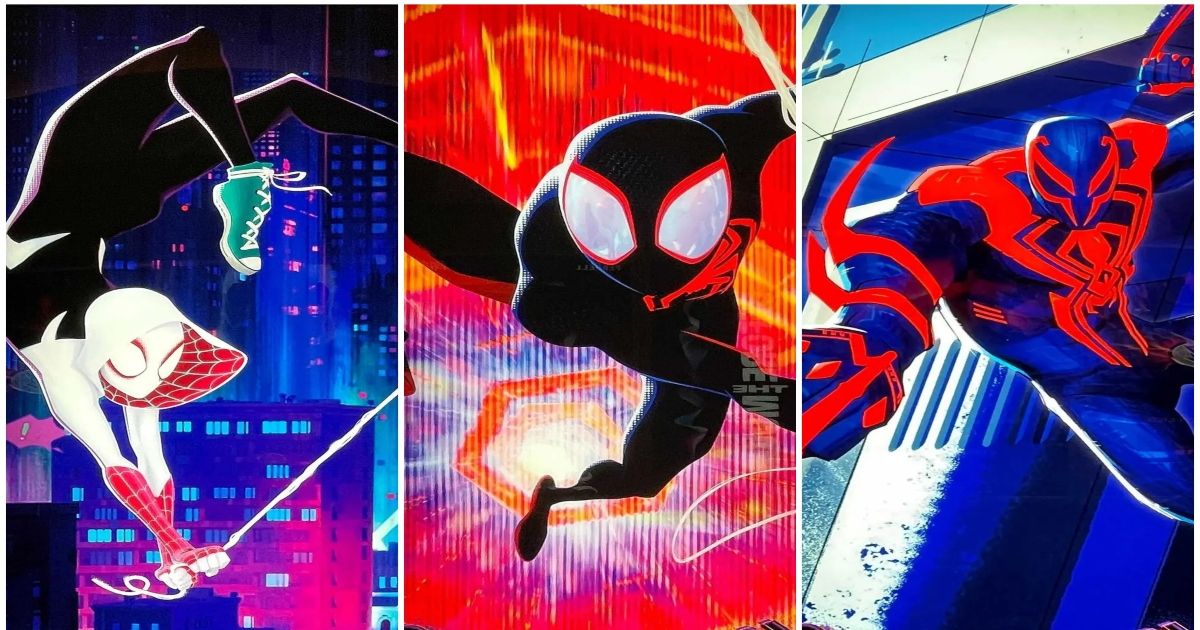Spider-Man: Across the Spider-Verse is not only the best Spider-Man sequel ever (it is the fourth "second" Spider-Man film after 2004's Spider-Man 2, 2014's The Amazing Spider-Man 2, and 2019's Spider-Man: Far From Home) but it also is the best superhero sequel ever. Structurally and thematically similar to The Empire Strikes Back, Toy Story 2 is also an apt comparison. This is a sequel to an animated classic that redefined a genre that was beloved by many that somehow managed to be better than its predecessor.
2018's Spider-Man: Into the Spider-Verse was a pleasant surprise that many didn't see coming. It was a superhero movie that anyone could enjoy, be they a fan or someone who didn't like superheroes. It is the best superhero movie ever, so the sequel arrived with far greater expectations. It felt like there was no way to live up to the hype, but Spider-Man: Across the Spider-Verse somehow does the impossible and exceeds every expectation.
The movie picks up roughly a year after the events of Spider-Man: Into the Spider-Verse, with Miles Morales (Shameik Moore) enjoying his role as Spider-Man but struggling to balance his normal life and his duties as a superhero. When Gwen Stacy (Hailee Steinfeld) returns to Miles's universe, he discovers that the multiverse has truly been blown wide open following his battle with the Kingpin, and now a new threat in the form of The Spot (Jason Schwartzman) threatens the entire multiverse.
Miles reunites with Peter B. Parker (Jake Johnson) and meets a whole host of Spider-Man who have taken up the responsibility to guard the multiverse. A few prominent names include Spider-Punk (Daniel Kuluuya), Pavitr Prabhakar (Karan Soni), and Spider-Woman (Issa Rae), and they are led by Miguel O'Hara aka Spider-Man 2099 (Oscar Isaac). The entire multiverse is at stake, and Miles must find his place in this wider universe.
Larger Spider-Man Story Unfolding
Spider-Man: Across the Spider-Verse delivers everything audiences loved about the first movie but digs in deeper. The comparison to The Empire Strikes Back is less to do with the open-ended nature of a sequel (audiences already know Spider-Man: Beyond the Spider-Verse is set in 2024) but with the fact that this is a more personal story. It does feature a wider scope than its predecessor, but in terms of a climax, it is a more emotional finale than the action-packed first film.
Miles is, of course, the star of the film, but Spider-Gwen is given a much larger role and even is the star of the film's prologue. While plenty of new characters get a great deal of attention, Miles and Gwen are the heart of this series, and the film takes the time to examine their wants and fears.
In an attempt to retroactively make Spider-Man: Into the Spider-Verse less of a standalone film and more the first chapter in a trilogy, the villainous Spot has been tied into the events of that film (in one of the funniest retcons ever) in addition to playing a part in Miles Morales' origin in more ways than one. This tendency for back-to-back sequels to expand upon a small detail from the first film can sometimes feel at odds with the original (a notable example is Jack Sparrow's compass going from a joke to an important piece of mythology in Pirates of the Caribbean: Dead Man's Chest). However, Spider-Man: Across the Spider-Verse threads the needle perfectly.
While the Spot is the primary driving antagonist for the film and supposedly the larger villain for the franchise, the actual conflict at the heart of the movie comes between Miles Morales and Spider-Man 2099. Spider-Man 2099 has adopted a mentality that they must work for the greater good, while Miles believes their job as Spider-Man is to try and save everyone. With great power comes great responsibility, but is it responsible to let one person die to save millions? Or is the responsible thing to take the risk and attempt to save everyone even if failure means losing everything?
None of these are easy questions, and it is the central conflict that separates Miles Morales and Spider-Man 2099. Similar to Captain America: Civil War, neither hero is 100% correct. It is just different forms of heroism coming into conflict, though the movie does ultimately side with Miles in that Spider-Man is a character who will never give up.
What Is the Cost of Being Spider-Man?
Spider-Man: Into the Spider-Verse's theme was that "anyone can wear the mask." Spider-Man: Across the Spider-Verse decides to dig deep into that statement and challenge it, or at least challenge the idea of what the audience expects from a Spider-Man story. It is no secret that there have been multiple Spider-Man reboots, and audiences who have never read the comics know the familiar beats of his story. While anyone can wear the suit, what does it take to be Spider-Man?
Spider-Man is Marvel Comics' most popular hero, and even before Miles Morales was introduced in the comics, there had been multiple retellings of the origin of Spider-Man. They all tend to share similar hallmarks. Spider-Man: Into the Spider-Verse alluded to this in the idea that the various Spider heroes had all lost important figures in their origin. Yet Spider-Man's origin is not the only major loss that defines the character: Gwen Stacy, Harry Osborn, Aunt May, Captain George Stacey, and many more.
Spider-Man is a character defined by loss as much as victory. He is a character who seems to be meant to suffer. This is why there is a section of the Spider-Man fandom that was disappointed with Tom Holland's MCU Spider-Man, as he was never the martyr that Tobey Maguire's Spider-Man was.
Spider-Man: Across the Spider-Verse decides to confront that idea head-on. It digs deep into why audiences want to see Spider-Man suffer and does it have to be this way. Yes, it is the established canon that many have followed, but does it always have to be this way? Can someone still be a Spider-Man or Spider-Woman without needing to suffer more loss?
Miles is different from all the other Spider-Man, and his willingness to break away from the establishment makes him a hero and an anomaly in both the literal sense of the film, but also the broader meta-narrative of the franchise. This version of Miles Morales is unique compared to his fellow heroes in the movie and to other Miles Morales in other Spider-Man media. Spider-Man: Across the Spider-Verse is a movie that argues if they are to continue redoing and reimagining Spider-Man, creators need to not fear forging their own path and trying new things.
Comic Book Truly Come to Life
Spider-Man: Into the Spider-Verse was shot in the arm of the animation industry, breaking away from the standard realism and going for cartoonish hyper-stylized visual styles. Its influence has since been felt in films like The Bad Guys, Puss in Boots: The Last Wish, and even the upcoming Teenage Mutant Ninja Turtles: Mutant Mayhem. The filmmakers for Spider-Man: Across the Spider-Verse knew the expectations that audiences now had for the film, and they certainly lived up to the challenge.
Spider-Man: Across the Spider-Verse is a gorgeously animated film, a visual spectacle with jaw-dropping animation that delights with every frame. The various heroes are given their own unique art design, and with Miles now exploring new dimensions, he is interacting with entirely fresh, innovative environments. This is more a multiverse of madness than the 2022 Doctor Strange sequel. From a version of Vulture modeled after Leonardo DaVinci's sketches to Spider-Punk being animated in a rock album collage style, this is a story that only can be told in the medium of animation, and it is all the better for it.
Much like the first film, the movie uses the visual language and direction of comic books and marries with film seamlessly. The backgrounds in dialogue scenes often change between shots to reflect the character's emotions. Even without sound, one could still easily interpret the story just by the images alone. This is a film that, on a technical level, is leaps ahead of what they pulled off on the first film.
Love Letter to Spider-Man
Spider-Man: Across the Spider-Verse probably has more Easter eggs and references than any other superhero movie and probably any other movie. While certain audiences might roll their eyes at that and think the movie is just a series of that scene of Leonardo DiCaprio in Once Upon a Time in Hollywood pointing at the screen, these references are fun but never the centerpiece. The movie is firmly focused on its core cast of characters, with the various references a nice treat for audiences but never the centerpiece.
Fans of various versions of Spider-Man from across his rich history in film, television, and video games certainly will not be disappointed. There are cameos plenty, some of which have been advertised but also many that are not what any audience could anticipate in the best way possible. It certainly will inspire plenty of conversation among friends about all the various cameos and connections to other shared universes both on the big and small screen.
This love letter to all things Spider-Man extends to the story itself, drawings elements and motifs from various Spider-Man stories. Like Sam Raimi's Spider-Man 2, the movie digs into what is the cost of being Spider-Man, while the Spot has a lot in common with Electro from The Amazing Spider-Man 2. The Spot starts out as a small crook (one that Miles mocks as a villain of the week), which drives the villain mad and desires more power to show Spider-Man he is serious. Miles indirectly makes his own arch-enemy in the way many Spider-Man have been tied to their greatest villains' creations. This is a movie building off the rich history of Spider-Man stories to craft a unique one all its own.
Across the Spider-Verse Is an Amazing Sequel
Spider-Man: Across the Spider-Verse is the rare sequel that not only lives up to the original, but it surpasses it. It might not be as iconic as the first film in terms of particular visual imagery (the "What's Up Danger" scene will be a high mark for the genre forever), but Spider-Man: Across the Spider-Verse is a more emotionally complex, visually innovative, and action-packed sequel that, similar to both The Empire Strikes Back or Avengers: Infinity War, has a cliffhanger which will leave audiences counting down the days until the epic conclusion.
The concept of the multiverse was a rather novel idea for general audiences at the time. Now, it is a concept audiences are more than familiar with. The MCU has explored it in Loki, Doctor Strange in the Multiverse of Madness, and Spider-Man: No Way Home. Two weeks after the release of Across the Spider-Verse, DC's The Flash will also be a multiverse superhero epic. The multiverse was even the subject of an Academy Award-winning film, Everything Everywhere All At Once.
In the five years since Spider-Man: Into the Spider-Verse, one would think the multiverse would be played out, but Spider-Man: Across the Spider-Verse shows there is still plenty of excellent storytelling potential with the multiverse. It is still very early in the summer movie season, but it will be challenging for any movie to top Spider-Man: Across the Spider-Verse.
Spider-Man: Across the Spider-Verse is a production by Columbia Pictures, Sony Pictures Animation, Marvel Entertainment, Arad Productions, Lord and Miller Productions, and Pascal Pictures. Spider-Man: Across the Spider-Verse opens in theaters on June 2nd, 2023.





Comments
Post a Comment